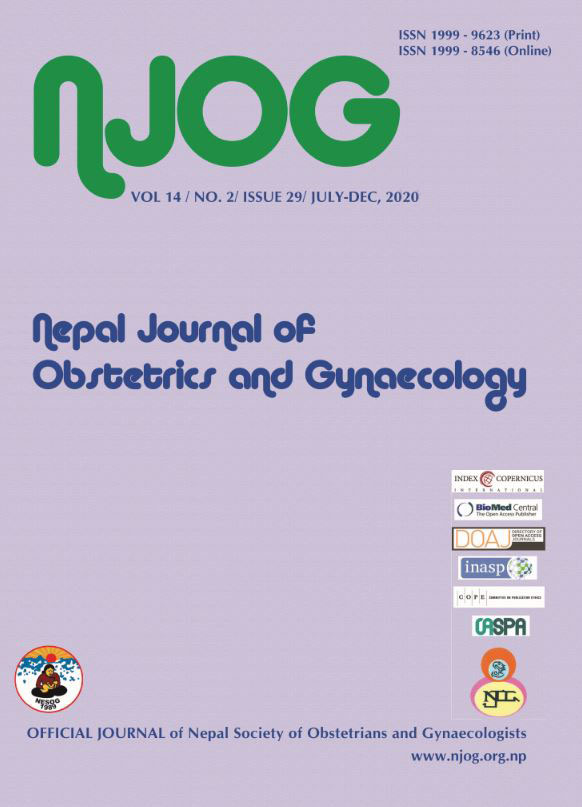Congenital genital tract obstruction as a challenge for functioning reproductive health: a study from a tertiary care center in Nepal
Abstract
Aims: To find out the uterovaginal anomalies associated with congenital genital tract obstruction and successes achieved in its management.
Methods: This was a descriptive study done at department of Obs/Gyn at Tribhuvan University Teaching Hospital from April 2014 to April 2018. Types of genital tract obstruction, surgical treatment, success of management and surgical complications were studied.
Results: Of 35 cases 16 (46%) consisted of adolescents aged 11-15 yrs. Majority cases of GTO was due to vaginal septum 12(34%): longitudinal 4(33%), mostly transverse vaginal septum (TVS) 8(67%): upper TVS 4 and lower TVS 4,one among each associated with concurrent Imperforate hymen (IH). Other GTO consisted of only IH cases 9 (26%), vaginal agenesis 7 (21%), non- communicating rudimentary horn 4 , non-communicating right cornua 1and cervical stenosis 1(3%). Resection of septum performed in 12 cases of vaginal septum. hymenectomy in 8 and rudimentary horn excision in 4 cases. Restenosis was common complication in six cases.
Conclusions: Adolescent age of 11-15 years is the common age of presentation of genital tract anomaly with vaginal septum the most common. Pre-surgical assessment is the key to successful surgical outcome.
Keywords: adolescent, congenital, genital tract obstruction, resection
Downloads
Downloads
Published
How to Cite
Issue
Section
License

This work is licensed under a Creative Commons Attribution-NonCommercial 4.0 International License.
Copyright on any research article in the Nepal Journal of Obstetrics and Gynaecology is retained by the author(s).
The authors grant the Nepal Journal of Obstetrics and Gynaecology a license to publish the article and identify itself as the original publisher.
Articles in the Nepal Journal of Obstetrics and Gynaecology are Open Access articles published under the Creative Commons CC BY-NC License (https://creativecommons.org/licenses/by-nc/4.0/)
This license permits use, distribution and reproduction in any medium, provided the original work is properly cited, and it is not used for commercial purposes.



